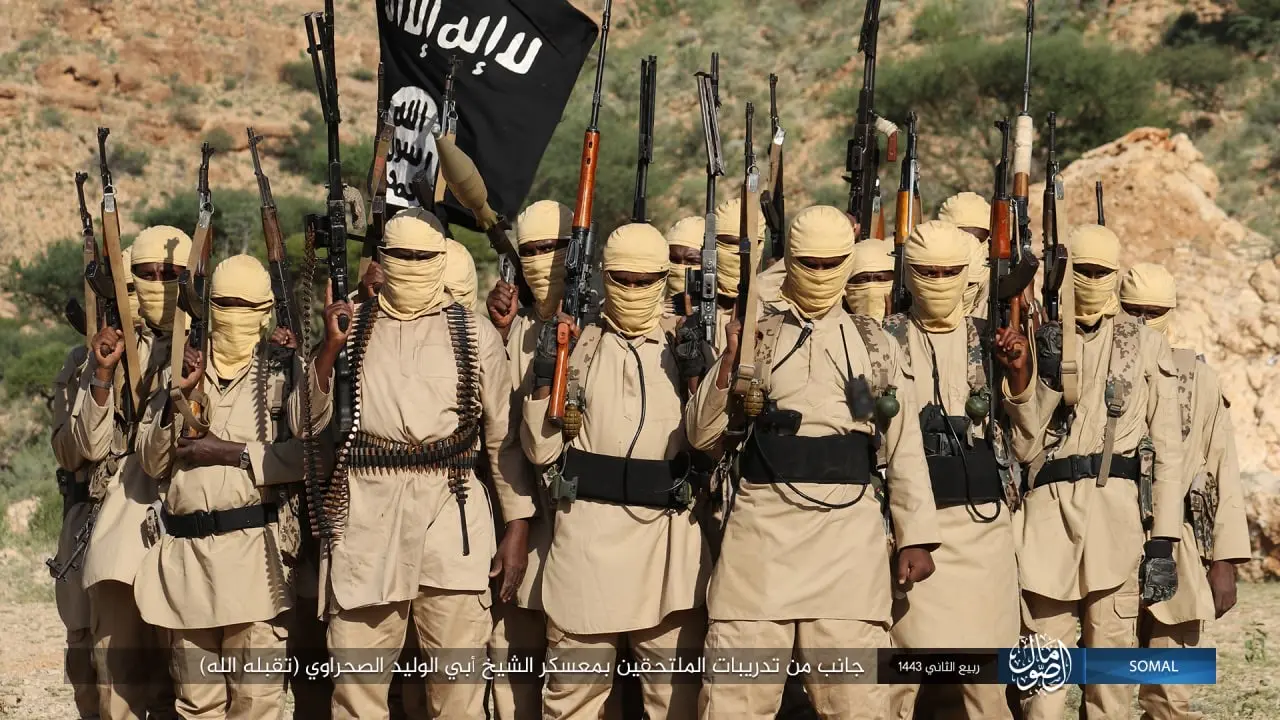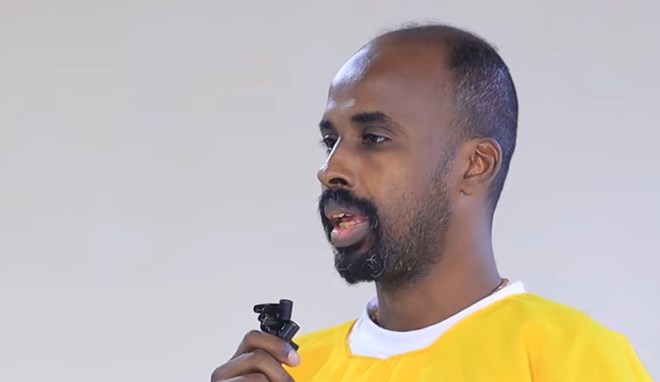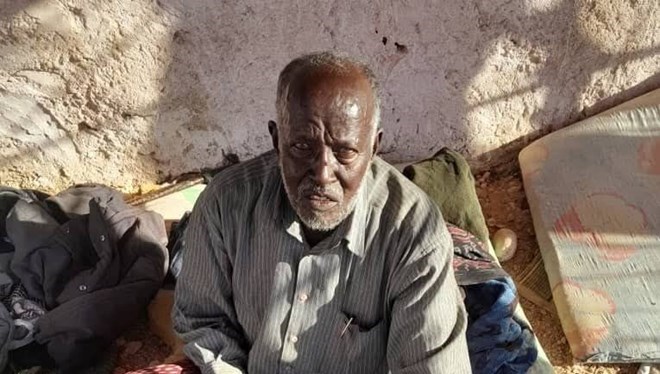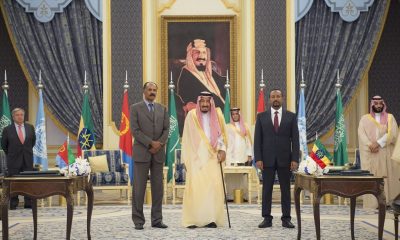Terrorism
U.S. and Daesh: Uncovering a New Battlefront in Somalia

The announcement that the top leader of Daesh (ISIS) has allegedly relocated to Somalia marks a significant shift in the global fight against terrorism. This development raises critical questions about the future of U.S. strategy in the Horn of Africa and the broader implications for international security.
The U.S. has intensified its focus on militant groups in Somalia following intelligence reports that ISIS’s top leader, Abu Hafs al-Hashemi al-Qurashi, has traveled from Syria or Iraq to Yemen and potentially into Somalia’s Puntland region. This move signals a strategic relocation, underscoring ISIS’s intention to expand its influence in Africa.
Somalia has long been plagued by militant groups, with Al-Shabaab being the most prominent. However, the recent influx of ISIS fighters and operatives from Yemen has bolstered IS-Somalia’s capabilities, making it a formidable threat. The group’s leader in Somalia, Abdul Qadir Mu’min, was targeted by a U.S. airstrike last month, but his fate remains uncertain.
U.S. officials are increasingly concerned about ISIS’s activities in Somalia, particularly its role in international finance and its potential to serve as a new operational base. A senior U.S. defense official noted that ISIS leaders view Africa as a fertile ground for their operations, offering more freedom and opportunities to expand.
The U.S. strategy in Somalia is multifaceted and controversial. The use of airstrikes and special operations forces to target militant leaders has been effective in disrupting terrorist activities but has also raised questions about sovereignty and civilian casualties. The recent strike in Dadaar, which killed three ISIS militants, exemplifies the high-stakes nature of these operations.
Critics argue that the U.S.’s military approach may exacerbate the situation by fueling anti-American sentiment and driving more recruits into the arms of militant groups. Additionally, the focus on ISIS may divert attention from other pressing issues, such as political instability and humanitarian crises in Somalia.
As the U.S. ramps up its efforts against ISIS in Somalia, the efficacy and ethics of its strategy come into question. Are airstrikes and military interventions the best way to combat terrorism, or do they perpetuate a cycle of violence? How can the U.S. balance its counterterrorism objectives with the need to support political stability and development in Somalia?
The relocation of ISIS’s leadership to Somalia presents a complex and provocative challenge. It demands a nuanced approach that considers the geopolitical, social, and ethical dimensions of counterterrorism. The world will be watching closely as the U.S. navigates this new battlefront in the global fight against terrorism.
Terrorism
Al-Shabaab Defector Testifies: Buuhoodle Has Become a Training Hub for Militants

Explosive testimony emerged from the Puntland Armed Forces Court on Monday, as one of 10 defendants on trial for alleged ties to terror groups Al-Shabaab and ISIS claimed that Buuhoodle town is a known recruitment and training center for Al-Shabaab.
The unnamed defendant, who told the court he defected from Al-Shabaab, stated that residents of Buuhoodle were trained in Jilib, the group’s longtime headquarters in southern Somalia. He further claimed he had been instructed to establish a training camp in Buuhoodle but refused, saying, “That is what made me turn away from Al-Shabaab.”
“Most of the people living in Buuhoodle are Al-Shabaab. Many of those who trained with me have already been arrested,” the man told the court.
According to the court proceedings, the man had initially fled to Hargeisa but claimed he was harassed, leading him to travel to Jilib for training. After defecting, he surrendered to Ethiopia’s Liyuu Police, who reportedly told him they couldn’t help and advised him to seek refuge in Puntland instead. He insisted he has committed no crimes, but said he feared for his life after rejecting Al-Shabaab’s ideology.
The court in Bosaso is expected to issue verdicts soon against the 10 men on trial, which include two foreign nationals.
Defendants:
- Nuur Mohamed Macalin, 30
- Mutahar Xamud Qayib, 24 (foreigner)
- Salaad Caseyr Muse, 62
- Mushir Mohamed Said, 38 (foreigner)
- Ibrahim Yuuya Ali, 35
- Abdilaahi Ali Ayuu, 25
- Abdilaahi Ahmed Yusuf, 25
- Mohamed Macalin Adan, 25
- Hasan Yusuf Macalin Isaaq, 27
- Amxmed Mohamed Abdi, 40
Background:
Al-Shabaab, a U.S.-designated terrorist organization, has long used Jilib as its main stronghold and training base. The group has been responsible for hundreds of deadly attacks across Somalia, Puntland, and even neighboring Kenya and Ethiopia. The allegation that Buuhoodle, located near the Somaliland-Ethiopia border, is becoming a training hub raises major regional security concerns.
This case may further strain inter-regional relations as Puntland courts make bold assertions implicating residents of Somaliland territory in militant activity. The outcome of the trial — and any potential reaction from local communities or political entities — could have significant national security implications.
Stay with WARYATV for exclusive coverage.
Terrorism
Turkey’s High-Tech Aid to Somalia: Akinci Drones Set to Transform Anti-Terror Strategy

Turkey escalates its military support for Somalia with advanced unmanned aerial vehicles, aiming to turn the tide against Al-Shabaab.
Turkey has stepped up its military aid to Somalia by deploying advanced Bayraktar Akinci drones, significantly enhancing Somalia’s capabilities to combat the persistent threat posed by Al-Shabaab. This strategic move not only amplifies the Somali National Army’s (SNA) operational effectiveness with high-endurance, precision-targeting technology but also marks a pivotal shift in the regional power dynamics.
The introduction of the Akinci drones, equipped with superior surveillance systems and an impressive payload capacity, promises a new era in precision airstrikes for Somalia. These drones can carry a diverse arsenal, from SOM cruise missiles to MK-82 bombs, enabling detailed and discrete operations against militant hideouts without significant collateral damage.
This deployment underlines Turkey’s robust commitment to Somalia’s security architecture, extending beyond mere military hardware to encompass training and infrastructural support. By enhancing the SNA’s tactical capabilities, Turkey is not just countering the immediate threats but also contributing to a long-term stability strategy in the Horn of Africa.
Analysts view this development as a game-changer that could deter Al-Shabaab’s operations and reduce their territorial control, potentially leading to a more secure and stable Somalia.
Terrorism
Former ISIS Leader Dies in Puntland Prison: Details Unconfirmed

Ex-ISIS commander Abdirahman Shirwac Lahore’s mysterious death in Puntland custody raises questions ahead of major anti-ISIS operations.”
Former senior ISIS figure Abdirahman Shirwac Lahore has died under unclear circumstances in a Bosaso prison, as Puntland’s security forces brace for a new offensive against the terror group’s remnants and affiliates.
Lahore, 60, had been detained since early February after defecting from ISIS and surrendering. Despite facing a death sentence for his alleged role in numerous terror acts in Bosaso, the cause of his death remains undisclosed, fueling speculation and concern ahead of planned security crackdowns.
Puntland Airstrikes Devastate ISIS Strongholds, Killing Over 30 Fighters
Puntland Claims it Uncovered ISIS Treatment Sites, Business Links in Somaliland
U.S. and UAE Joint Operation Kills 16 ISIS Militants in Puntland Stronghold
Telegram Shuts Down Key ISIS Propaganda Channel Amid Puntland Conflict
Puntland Forces Close in on ISIS Stronghold, Final Battle Nears
Terrorism
Somali Journalist Killed in Al-Shabaab Bombing Aimed at Presidential Convoy

Somali journalist Mohamed Abukar Dabaashe becomes the first press fatality of 2025 in a deadly attack targeting President Hassan Sheikh Mohamud’s convoy in Mogadishu.
In a grim morning in Mogadishu, chaos ensued when a bomb exploded at El-Gab Junction targeting the convoy of Somali President Hassan Sheikh Mohamud. While the President emerged unscathed, the attack claimed the life of Mohamed Abukar Dabaashe, a journalist working with Radio Risaala, marking him as the first journalist casualty in Somalia for the year 2025.
The attack occurred in close proximity to Villa Somalia, the official residence of the President, underscoring the daring nature of Al-Shabaab’s insurgency. Dabaashe, a respected figure in the Somali media landscape, was fatally caught in the blast while a nearby building collapsed in the aftermath. This tragic incident underscores the perilous conditions under which journalists operate within the country.
Al-Shabaab promptly claimed responsibility for the attack, stating their intent to kill the president. This bold assertion marks a significant escalation in the group’s tactics, considering it the first direct attempt on President Mohamud’s life since an incident in 2014 during his earlier tenure.
The Somali Journalists Syndicate (SJS) immediately condemned the attack, mourning the loss of Dabaashe as a major blow to the press community. The loss was further compounded by the death of another journalist, Ayuub Wardheere, who perished in the same attack. The Somali Women Journalists Organization (SWJO) expressed its heartache over the incident, highlighting the ongoing risks faced by media professionals in Somalia.
The condemnation reached political echelons with former President Sharif Sheikh Ahmed denouncing the act as cowardly and calling for national unity against such terrorism. He emphasized the non-combatant status of the fasting victims, including Dabaashe, during this holy month, underscoring the barbaric nature of the attack.
Following the incident, President Mohamud was seen in Middle Shabelle overseeing a military campaign against Al-Shabaab, signaling a strong governmental response to the insurgent threat. In reaction to the attack, Somali security forces initiated widespread counterterrorism operations in Mogadishu, with expectations of heightened security measures to safeguard the capital against future threats.
This attack not only represents a tragic loss for the media community but also illustrates the volatile security situation in Somalia, where journalists remain vulnerable to the broader conflict affecting the nation. The death of Dabaashe serves as a somber reminder of the challenges and dangers journalists face while covering stories in one of the world’s most dangerous regions for the press.
Somalia
Al-Shabaab Targets Somali President’s Convoy Four Dead

Mogadishu on the Brink: Al-Shabaab’s Bold Strike Mirrors Taliban’s Ascendancy.

Al-Shabaab’s audacious attack on the Somali President’s convoy highlights the looming threat of a takeover akin to the Taliban’s rise in Afghanistan, signaling potential collapse of central authority in Somalia.
In a scene distressingly reminiscent of the Taliban’s takeover in Afghanistan, Al-Shabaab’s recent attack on President Hassan Sheikh Mohamud’s convoy in Mogadishu starkly highlights the insurgent group’s undiminished potency and ominous intent in Somalia. This bold assault not only targeted the nation’s leader but also exposed the precariousness of the Somali government’s grip on power, confined to an ever-shrinking stronghold within Mogadishu’s Halane base—often referred to as the most secure zone in the capital.

The incident starkly illustrates how Al-Shabaab, despite facing extensive counterterrorism measures, continues to infiltrate high-security zones, suggesting possible collusion with insiders and raising fears that the capital could fall. This attack serves as a grim portent of Al-Shabaab’s capabilities and intentions, mirroring the strategic encroachments that preceded the Taliban’s swift resurgence in Afghanistan.
The global community, having invested immense resources in Somalia for over three decades, watches with growing dismay as the situation deteriorates. The persistent instability and the seeming futility of continued financial aid, which some critics compare to pouring resources into a bottomless pit, has led to international exasperation. Moreover, there is an increasing perception among experts that the Somali government and Al-Shabaab might be two sides of the same coin, with accusations of corruption and collusion weakening the official stance against terrorism.

Despite immediate international reactions condemning the attack—highlighted by a strong statement from the UK—the broader implications are troubling. The Somali government’s failure to secure even the most critical areas of Mogadishu from such attacks not only undermines local confidence in their leadership but also signals a potentially catastrophic lapse in the nation’s security architecture, akin to the pre-collapse conditions observed in Afghanistan.
As President Mohamud proceeds to the frontlines, ostensibly to rally the troops and strategize counter-offensives, the shadow of Al-Shabaab’s threat looms large, suggesting that without significant and effective international support and a radical overhaul of internal security protocols, Somalia might well be on the path to becoming the next Afghanistan in terms of militant takeover and governmental collapse.
Terrorism
Somalia: U.S. Ramps Up Anti-Terror Efforts in Africa

As the U.S. intensifies airstrikes targeting ISIS and al-Shabaab in Somalia, the broader implications signal a strategic shift in America’s global counterterrorism approach.
February saw a significant uptick in U.S. military activities in Somalia, indicating a sharp strategic shift in America’s counterterrorism efforts. This ramp-up involves multiple airstrikes, particularly targeting high-value terrorists, which underscore a renewed focus on Africa as a central battleground against global terrorism.
Despite previous administrations’ focus on reducing U.S. military footprints abroad, current actions in Somalia suggest a different trajectory under the new administration. This shift is partly in response to the growing terrorist threats that continue to emerge from Africa, notably from groups like ISIS and al-Shabaab.
The recent operations by the U.S. Africa Command (AFRICOM) successfully eliminated key figures such as Ahmed Maeleninine, a prominent ISIS leader and recruiter. These strikes are not isolated incidents but part of a broader campaign to dismantle terror networks that pose direct threats to regional stability and U.S. national security.
The continued presence and expansion of terrorist groups in Somalia have drawn a direct response from the U.S., highlighting the strategic importance of Africa in the global fight against terrorism. The operations extend beyond mere military action, reflecting a comprehensive approach that includes intelligence sharing, local military training, and counterterrorism financing efforts.
Africa’s growing role as a front line in the war on terror presents both opportunities and challenges for U.S. policy. With over 3,400 terrorist attacks recorded in the continent in 2024 alone, the U.S. is poised to increase its military and strategic investments significantly. This involves not only combating immediate threats but also addressing the underlying socio-political factors that contribute to regional instability.
The U.S. is likely to continue its robust military engagements in Africa, particularly in Somalia, as part of its broader strategy to counteract the spread of terrorism. The focus will likely be on enhancing the capabilities of local forces while maintaining a sustainable U.S. military presence to support these efforts.
This strategic pivot reflects a clear recognition of the evolving nature of global terror threats and the critical role Africa plays in the international security landscape. As the situation develops, the effectiveness of these efforts will be closely monitored to ensure they achieve their intended goals of enhancing security and stability in the region.
Analysis
Israel and Ethiopia Unite Against Al-Shabaab and Houthis

In a landmark meeting, Israel and Ethiopia vow to combat Al-Shabaab and Houthi insurgencies, highlighting a significant escalation in their joint counterterrorism efforts.
During a pivotal meeting in Jerusalem, the Israeli and Ethiopian governments have underscored their commitment to bolstering counterterrorism measures, focusing notably on the threats posed by Al-Shabaab in Somalia and the Houthi rebels in Yemen. This collaboration marks a significant strategic alignment against regional security threats that have broader implications for global stability.
The linkage between Al-Shabaab and the Houthi rebels has become a particular concern for both nations, with these groups conducting operations that not only destabilize their immediate regions but also pose risks to international security. The collaboration between these groups represents a new frontier in the terrorism landscape, merging threats from Africa and the Middle East.
Israeli Foreign Minister Gideon Sa’ar has articulated a clear vision for Israel’s role in this partnership, emphasizing the necessity to eradicate the bases of radical Islamic terror across both regions. Sa’ar’s remarks highlighted the critical nature of combating these groups, which have direct impacts on regional security and global trade routes, particularly those affecting Israel.
Ethiopia’s Strategic Position
Ethiopia’s geopolitical relevance was a central theme, with Foreign Minister Gedion Timotheos discussing Ethiopia’s pivotal role in counterterrorism operations within Africa. Ethiopia’s efforts are crucial in containing Al-Shabaab’s influence, which is increasingly seen as part of a larger network of terror that includes the Iranian-backed Houthis.
The discussions also paved the way for deeper bilateral relations, with initiatives aimed at enhancing security cooperation and strengthening diplomatic ties. The historical connections between the two countries were also highlighted, bringing a cultural and historical dimension to their modern political and strategic engagements.
This partnership has profound implications for security dynamics in the region. By collaborating, Israel and Ethiopia not only enhance their own national security landscapes but also contribute to broader efforts to maintain stability in the Horn of Africa and the Middle East. The move signals a growing recognition of the interconnected nature of security threats that span across continents.
The commitment by Israel and Ethiopia to combat regional terrorism through this partnership reflects a significant development in international relations and counterterrorism. It underscores the necessity for collaborative efforts in tackling global security challenges, setting a precedent for other nations within and beyond the regions involved. This strategic alliance could well be a cornerstone in the ongoing battle against terrorism, influencing future counterterrorism strategies and fostering a safer, more stable international community.
Terrorism
ECOWAS Regional Bloc Activates Counterterror Force

The activation of the ECOWAS regional standby force marks a significant step in West Africa’s fight against terrorism, especially given the challenges following the withdrawal of three member states. This development underscores the region’s commitment to security cooperation, despite facing numerous challenges both internally and from the increasing influence of extremist groups.
The establishment of the 5,000-troop force is a proactive measure to address the escalating terrorism threats that have plagued the Sahel region, recognized as the global epicenter of extremism. This initiative is timely, considering the Global Terrorism Index’s findings which show an alarming rise in terror-related fatalities within the region. The ECOWAS force aims to enhance the collective security framework, crucial for tackling the sophisticated networks of groups like Boko Haram and Islamic State’s Sahel affiliate.
Despite the positive step forward with the activation of the force, there are significant doubts regarding its effectiveness. The departure of Burkina Faso, Mali, and Niger — now part of the Alliance of Sahel States — poses logistical and operational challenges. These countries’ exit from ECOWAS raises concerns about the regional body’s ability to mobilize the necessary troop numbers and resources to maintain an effective standby force.
The operational bases of the force, as well as the current capabilities of the contributing countries, are under scrutiny. The ability of the remaining ECOWAS members to fill the void left by the three departing states is uncertain. Furthermore, the political dynamics within ECOWAS, compounded by the new Alliance of Sahel States, could complicate command and control structures, as well as the strategic deployment of the force.
Despite these challenges, the continued defense and security cooperation between ECOWAS and the Alliance of Sahel States provides a glimmer of hope. This cooperation is crucial for bridging gaps in military capabilities and ensuring that joint efforts against terrorism are not hindered by political divisions. The collaborative approach may also help in addressing the root causes of extremism by promoting stability and economic development across the affected regions.
Observers and regional security analysts will be closely monitoring the effectiveness of the ECOWAS force in changing the security landscape of West Africa. The success of this initiative could serve as a model for other regions grappling with similar challenges. However, much depends on the political will of the member states, their ability to overcome internal and external pressures, and their commitment to a unified regional strategy against terrorism.
In summary, while the ECOWAS regional standby force represents a bold step toward regional security autonomy, its success will largely depend on overcoming significant operational and political challenges. The path forward requires a balanced approach that includes strengthening military capabilities, enhancing political cooperation, and addressing the socioeconomic factors contributing to regional instability.
-

 Analysis2 weeks ago
Analysis2 weeks agoSaudi Arabia’s Billion-Dollar Bid for Eritrea’s Assab Port
-

 Somaliland2 months ago
Somaliland2 months agoSomaliland and UAE Elevate Ties to Comprehensive Strategic Partnership
-

 Africa12 months ago
Africa12 months agoHow Somaliland Could Lead the Global Camel Milk Industry
-

 Analysis12 months ago
Analysis12 months agoIran escalates conflict, attacking Israel; US forces help Israel to intercept Iranian projectiles
-

 Analysis11 months ago
Analysis11 months agoIsrael and Iran on Edge: Tensions Escalate Amidst Rising Threats
-

 Top stories10 months ago
Top stories10 months agoGunmen Kill 11 in Southeastern Nigeria Attack, Army Reports
-

 TECH10 months ago
TECH10 months agoZimbabwe Approves Licensing of Musk’s Starlink Internet Service
-

 Analysis11 months ago
Analysis11 months agoFacts in the Trump Courtroom vs. ‘Facts’ in the Court of Public Opinion




























